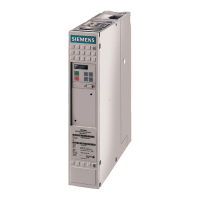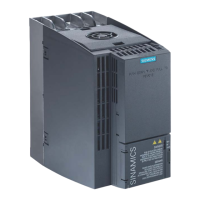General CANopen definitions Issue 01/05
CANopen Option Module Operating Instructions
12 6SE6400-5BC00-0BP0
Multi-Master capability
Bus access rights are not issued by a meta-level control unit (bus master) per
network. Each participant can rather start to send a message with equal rights as
soon as the bus has become free. If several participants access the bus at the
same time, an arbitration process allocates each participant the bus access right in
line with the priority of the message they want to send at that particular moment.
Each participant can therefore communicate directly with every other participant.
As the transmission of a message can be initiated by the message source itself,
then in the case of event-controlled transmission of messages, the bus is only
occupied when a new message is on-hand.
No-loss bus arbitration
As the bus is accessed at random under the CAN protocol, it is possible that
several participants want to occupy the bus at the same time. In other random bus
access routines (e.g. CSMA/CD), this causes the destruction of the suppressed
messages. In order to solve such a bus access conflict, a repeated occupation of
the bus is required using an appropriate triggering strategy. The CAN protocol
therefore deploys a routine to ensure that the message with the highest priority at
any given time is sent without any destruction of message contents.
Short block lengths
The maximum data length of a CAN message (CAN communication object) is
limited to 8 bytes. This data length is usually sufficient to transmit the information
occurring in the lowest field area in a CAN message.
The maximum possible latency for the highest priority message in a CAN network
based on 8 byte-long messages is 130 bit times.
Structure of a data telegram
A CAN data telegram consists of a header containing the CAN identifier which is a
utility data area, this can contain zero to eights bytes of utility data, and a trailer.
COB-ID
Header Frame
Useful Data (max. 8 Byte)
Trailer Frame
